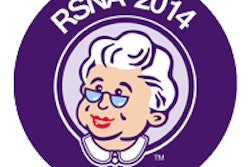
Adding digital breast tomosynthesis (DBT) to biennial screening mammography is a cost-effective way to improve breast cancer detection in women with dense tissue, compared with mammography alone, according to a new study published online in Radiology.
Mammography's effectiveness decreases in dense tissue, prompting the need for supplemental imaging. DBT offers a less expensive and more accessible additional test for dense breast tissue than, say, screening MRI, which is the most sensitive, or ultrasound, which is associated with higher false-positive rates, according to lead author Dr. Christoph Lee, from the University of Washington, and colleagues.
"Tomosynthesis only takes a few more seconds during the regular mammography exam," Lee told AuntMinnie.com. "It doesn't require a second modality or contrast, and it doesn't increase the false-positive rate."
 Dr. Christoph Lee from the University of Washington.
Dr. Christoph Lee from the University of Washington.In health economics, cost-effectiveness is defined as the balance between the benefits of care and the actual costs; in this case, the benefits of tomosynthesis include early detection of breast cancer, fewer false positives, and lower mortality rates in women with dense tissue, Lee said.
The commonly accepted threshold for cost-effectiveness is $100,000 or less per quality-adjusted life year (QALY). Lee's group found that adding DBT to biennial screening mammography for women ages 50 to 74 came in at almost 50% lower than that limit (Radiology, October 28, 2014).
"Adding tomosynthesis to mammography costs well under the QALY threshold," he told AuntMinnie.com. "There is a high likelihood that adding tomosynthesis for screening women with dense breasts will improve patient outcomes at reasonable cost."
Lee and colleagues used a simulation model developed by the University of Wisconsin, in collaboration with the U.S. National Cancer Institute (NCI) Cancer Intervention and Surveillance Modeling Network, as well as data from the Breast Cancer Surveillance Consortium (BCSC) and Medicare.
The researchers estimated the clinical utility and cost-effectiveness of biennial screening with mammography and tomosynthesis, compared with mammography alone, in women ages 50 to 74 years who had dense breast tissue. They used an average cost of $50 for an adjunct tomosynthesis exam, based on reported out-of-pocket charges for women at private radiology practices, and an average cost of screening mammography of $139, based on Medicare data.
The cost per QALY gained by adding tomosynthesis to digital mammography screening was $53,893, Lee and colleagues found. What's more, an additional 0.5 deaths were averted and 405 false-positive findings avoided per 1,000 women after 12 rounds of screening.
The cost of adjunct tomosynthesis did not affect the relative cost-effectiveness of combined screening until the added cost of tomosynthesis passed $87 (for a total screening cost of $226), they wrote.
"Our results suggest that biennial combined screening for women aged 50 to 74 years with dense breasts is a cost-effective approach from a federal payor perspective if priced appropriately (below a threshold combined screening cost of $226 versus $139 for digital mammography alone)," the authors wrote.
| Cost-effectiveness of DBT | ||||
| Sensitivity of mammo + DBT | Specificity of mammo + DBT | Additional DBT cost | Incremental cost-effectiveness ratio (cost per QALY gained) | |
| Base-case DBT cost | 0.80 | 0.92 | $50 | $53,893 |
| Screening cost doubled by DBT | 0.80 | 0.92 | $139 | $164,527 |
Opinion on the harm-benefit balance of screening mammography might shift due to the fact that adding tomosynthesis at the time of mammography screening could decrease the number of unnecessary diagnostic workups and invasive procedures that result from false positives, according to the researchers.
"Even if tomosynthesis didn't show any improved sensitivity, the fact that it decreases false positives makes it cost-effective when combined with mammography," Lee said.
Study disclosures
The study was supported by NCI and by a radiology research fellowship co-sponsored by GE Healthcare and the Association of University Radiologists.



















